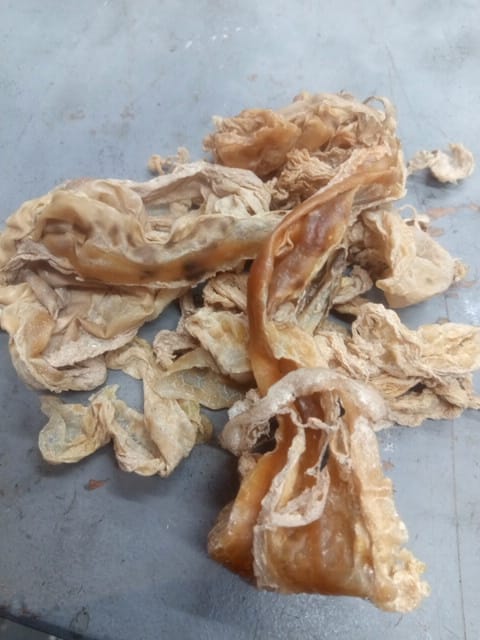I decided to convert my inner tubes into self-sealers recently after a double slow puncture. I have now done the conversion but due to a recent, prolonged cold snap here in the UK I haven’t been out on the bike yet to road test them due to the risk of ice.
So here, prompted by fellow blogger Niall asking me what they are like, is how easy the conversion was.
I’m not a fan of Muc-Off per se. I find a lot of their stuff to be over-marketed and average but there are one or two nuggets in their range which I quite like. Having dabbled in tubeless conversions over the past couple of seasons through work I have to say having used Stans a lot, I find Muc-Off’s rim tape the best as it has a slight stretch and less likely to rip. Stans is too brittle in my opinion. The sealant is better too. Thicker and lasts longer with the added bonus of smelling like a berry milkshake.
It’s well versed one of the downside’s of tubeless is that you have to check it every 3-6 months. I’ve taken Stan’s sealant out of tyres looking like brown chicken skin before and 6 month old Muc-Off just needing a top up. It’s good stuff and why I plumbed for this easier, mess-free option. Don’t be confused though. This is NOT actual Muc-Off tubeless sealant this is a special formula designed for tubes only. They claim it will last the life of the tube and never dry out which I’m skeptical about but confident it will last a lot longer and the reason I’ve gone for it. I also get it at Trade! Bonus!
The box is unashamedly Muc-Off. Big, bold and pink. In it you get a bottle of sealant, a valve core remover which will do Presta and Schrader and a couple of rubber o-rings which I’ll explain in a bit. The bottle comes pre-fitted with an extendable and resealable tube for easy installation.
The conversion itself is simply getting sealant into your tube and that’s it. The self-sealing then works by the inertia of your wheel coating the inside of your tube with sealant ready for any puncture and if it happens the air pressure in the tube forces sealant out which effectively hardens when it hits the air and seals the tube with next to no air loss. All you will see is a pink dot on your tyre.
The only caveat for using presta valves, like me, is that they must have removable cores or it isn’t going to be possible. Muc-Off supply a small pink (yawn!) tool you can use on presta and schrader. Removing the valve core is simple, just pop the tool over the flattened edges, undo and remove. Simple. Deflate the tyre first though or you risk the core shooting off like a bullet somewhere.
Once the core is off this is where the o-rings are useful. Schrader valves are wider than presta so the tube supplied with the sealant bottle is wider than the valve. Popping an o-ring onto the presta valve will inhibit sealant squirming out between the valve and tube when you are squeezing the bottle.
I found if you lightly pressed the tube against the o-ring at 6 o’ clock with your left hand and squeezed the bottle with your right it worked fine with no dribbly sealant. Just don’t push down too hard or you will squash your inner tube and stop the sealant getting in. Doing it at an angle the o-ring seal wasn’t as good and some sealant dribbled.
How much to put in your tube depends on its size and volume. There isn’t any advice on the box or bottle which would have been a useful guide, you just get a measuring scale down the edge of the lever. I like to pop a bit more than is normally recommended so went for approximately 80-100ml in each. #beltsandbraces I have 700x35c gravel tyres.
A little sealant is left on the valve which I wiped away then the valve core back in with the pink (yawn!) tool and job done.
100ml will probably add approx. 150g to the weight of each wheel. A small price to pay for peace of mind which I hope is the case.
I’ll report back when I eventually get out. The weather is due to warm up tomorrow and next week so won’t be long
Adios!







Cool 😎 I didn’t expect such a detailed reply 🤣
So, just to check, you had to buy tubes specifically with a removable valve core? This isn’t standard?
LikeLike
not always standard. Cheaper tubes tend not to be, branded, more expensive like Conti and Schwalbe do normally have removable cores. Mine are standard schwalbe
LikeLiked by 1 person
I’ve got a friend who is trying this stuff out too. So far so good. It sounds like a good trade-off and easier setup than actual tubeless. I wonder why they didn’t design the insertion tube to be smaller diameter than the valve stem, so it could slip inside? That would make it far easier and cleaner to add sealant. That’s how I do my tubeless sealant.
At least the pink valve core tool would be easier to find when I drop it in the workshop, unlike the usual black ones… 😂
LikeLike
Good idea. Patent it. 🤣
LikeLiked by 1 person